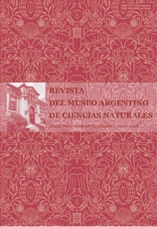Ecosistemas terrestres del Mioceno Temprano de la Patagonia central, Argentina: primeros avances
Resumen
A first approach to determine Early Miocene ecosystems in central Patagonia (mainly San Jorge Basin) was carried out considering the vegetational communities, inferred through palynological records, the fossil mammals and the reconstructed sedimentary environments. Two main transgressions took place in San Jorge Basin. The "Leonian" one flooded a limited region, but the "Superpatagonian" transgression reached the west margin, close to the Andean hills. The Late Oligocene-Aquitanian scenery was dominated by broad alluvial plains affected by distal ash falls. The Deseadean and "Late Deseadean" mammal faunas were adapted to open areas and seasonal conditions. The coeval vegetation shows important changes through this lapse, grading from close forests in the Late Oligocene to a still forested landscape with patches of shrubby and herbaceous communities in the Late Aquitanian. These modifications suggest a progressive humidity and temperature decrease. This climate trend would have continued up to the Early Burdigalian, in time of the Colhuehuapian mammal fauna. A broad tidal estuarine system (Superpatagonian transgression) developed in central Patagonia in the Late Burdigalian, occupied by tropical and aquatic plants suggesting a relevant increase in temperature and humidity. The coeval Pinturean fauna indicates similar conditions. Tectonic events in the Andean region determined a progressive dryness since the Early-Middle Miocene transition, in time of the Santacrucian fauna.
Texto completo:
PDFEnlaces refback
- No hay ningún enlace refback.

This work is licensed under a Creative Commons Attribution 3.0 License.

